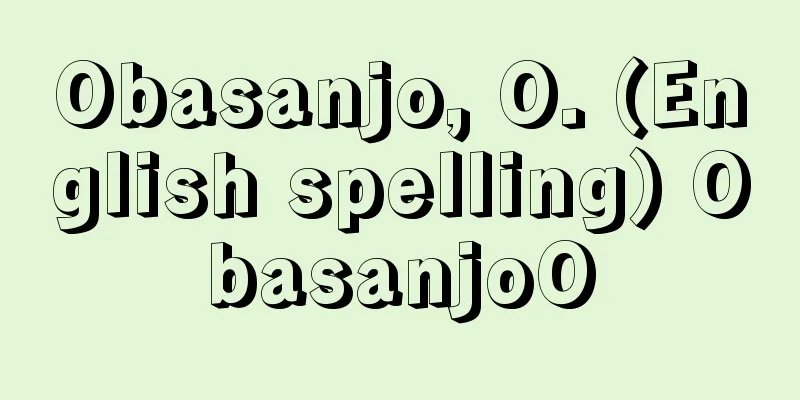Shimabara Rebellion

|
Also known as the Amakusa Rebellion, this was an uprising that took place between 1637 and 1640 by Christians in Hizen Shimabara and Amakusa Island. This region was the territory of Christian feudal lords Arima Harunobu and Konishi Yukinaga, and many of the residents were Christians. After the Battle of Sekigahara, the lord of Amakusa passed from the Konishi clan to the Terasawa clan, and in 1615, the lord of Shimabara passed to the Matsukura clan. The Matsukura clan forced farmers to pay excessive taxes and imposed harsh punishments on those who did not pay. The Edo Shogunate's policy of banning Christianity was particularly harsh in the oppression of Christians in this region. In this environment, a clash between the magistrate and farmers occurred in Arima Village in November 1630, which triggered a peasant uprising throughout the Shimabara Peninsula. Merchants, craftsmen, boatmen, and other people joined in the uprising, and the Amakusa peasants responded by rising up in revolt. Tokisada Shiro (→Tokisada Shiro Masuda), the son of wealthy farmer Jinbei Masuda, was selected as the leader, and the leadership consisted of ronin (masterless samurai) of the Konishi family and village representatives. The rebels defeated the Matsukura clan's soldiers, killed the castle lord's chief retainer, and barricaded themselves in Hara Castle. In December of the same year, the shogunate dispatched Itakura Shigemasa to command the soldiers of neighboring clans to suppress the revolt, but the rebels were strong, numbering 38,000. On New Year's Day of the following year, they launched an all-out attack, but failed, and Shigemasa was killed in battle. The shogunate dispatched Matsudaira Nobutsuna, a senior councilor, who starved the castle of its soldiers with an army of tens of thousands and temporarily requested the Dutch merchant ship "Rape" to bombard the castle from the sea, but the peasants stubbornly resisted. However, food and ammunition ran out, and the city finally fell to a full-scale attack by the Shogunate forces at the end of February. The Shogunate lost over 400,000 ryo in expenses and several thousand samurai, while Shigetsugu Matsukura was executed and the Terasawa clan's land was confiscated. After that, the ban on Christianity became even stricter, and national isolation was promoted. Source: Encyclopaedia Britannica Concise Encyclopedia About Encyclopaedia Britannica Concise Encyclopedia Information |
|
天草一揆ともいう。寛永 14 (1637) 年から翌 15年にかけて肥前島原と天草島のキリシタン信徒が起した一揆。この地方は,キリシタン大名有馬晴信や小西行長の領地で,住民にもキリスト教徒が多かったが,関ヶ原の戦いののち,天草の領主は小西氏から寺沢氏に代り,さらに元和1 (15) 年島原の領主が松倉氏に代った。松倉氏は農民に対して過重な年貢の負担を強制し,滞納する者には過酷な刑罰を課した。また江戸幕府の禁教政策におけるこの地方のキリシタン弾圧は特にきびしかった。このようななかで寛永 14年 11月有馬村で代官と農民の衝突が起り,これをきっかけに島原半島一帯の農民が蜂起した。これに商人,手工業者,船頭なども加わり,さらに天草の農民がこれに呼応して蜂起し,豪農益田甚兵衛の子四郎時貞 (→益田四郎時貞 ) が首領に推され,小西家牢人 (浪人) や村落代表によって指導部が構成された。一揆は松倉藩兵を破り城代家老を戦死させ原城にたてこもった。幕府は同 12月,鎮圧のため板倉重昌を派遣し近隣諸藩の兵を指揮させたが,一揆の勢力は強く,その数3万 8000人であったといわれる。翌年元旦,総攻撃をかけたが落ちず,重昌は戦死した。幕府は,老中松平信綱を派遣し,信綱は十数万の包囲軍による兵糧攻めや,一時的ではあったがオランダ商船『レイプ』号に依頼して海上から砲撃させるなどしたが,農民は頑強に抵抗した。しかし,食糧や弾薬が尽き,ついに2月末,幕府軍の総攻撃によって陥落した。幕府は 40万両余の費用と数千の武士を失い,一方松倉重次を処刑し,寺沢氏の所領を没収した。以後禁教は一層きびしくなり鎖国を促進した。
出典 ブリタニカ国際大百科事典 小項目事典ブリタニカ国際大百科事典 小項目事典について 情報 |
Recommend
Kiyasho
…the guardian of the kiyashio (lumberyard), a pla...
Kesari (English spelling)
A newspaper founded in India in 1880. Its name mea...
Occupation - Oryo
〘 noun 〙① (━suru) In ancient times, to supervise a...
Cardozo
American jurist. After serving as a lawyer, he bec...
Circuit Court - junkaisaiban
A system in the UK in which England and Wales are ...
Izumisano [city] - Izumisano
A city in the southern part of Osaka Prefecture. I...
Śaka (English spelling) Saka
…[Otani Nakao] Later, around the 1st century BCE,...
Bashu - Hashu
(Ba is the region centered around present-day Chon...
Kyoto 10-go masu (10-cup)
… In the Middle Ages, with the development of sma...
Wonosobo Region - Wonosobo
…The Yoruba of West Africa have two slaves sleep ...
Lares (English spelling)
The guardian deities of ancient Roman homes. Accor...
Gozencho - Imperial register
Important ledgers held by nobles. The types of led...
Flower Agency
...The main hall used for ceremonies is three bay...
Segre, C. (English spelling) SegreC
…He was later elected president of the Accademia ...
Carriage - Carriage
The reading unit of a scanner. In many scanners, t...









